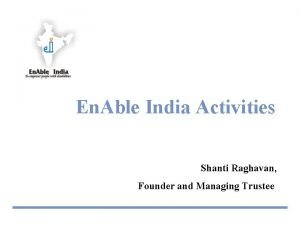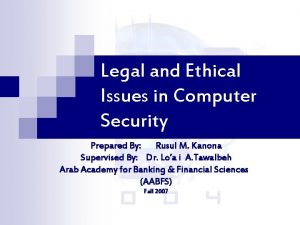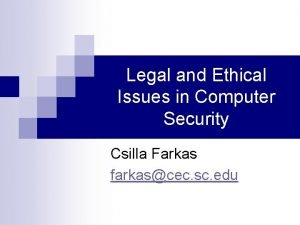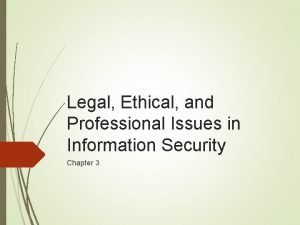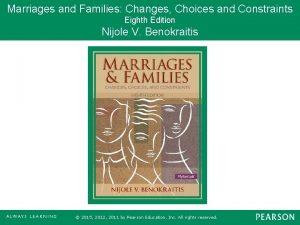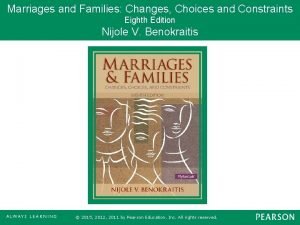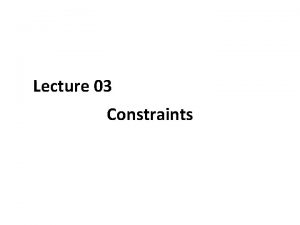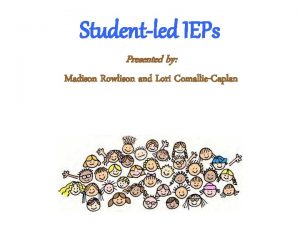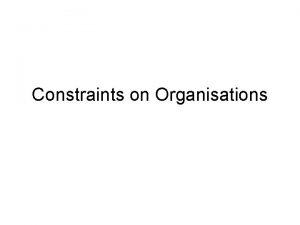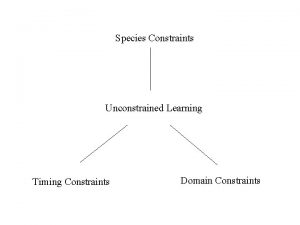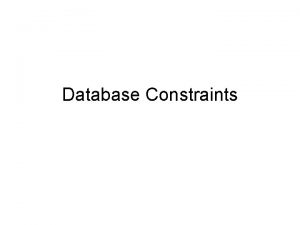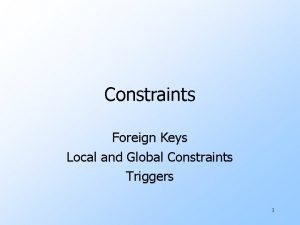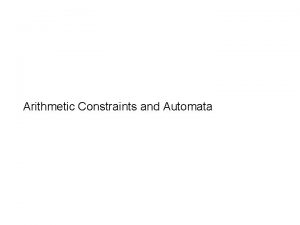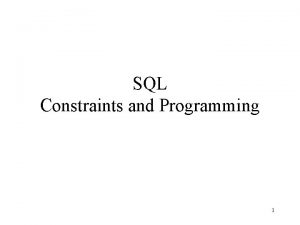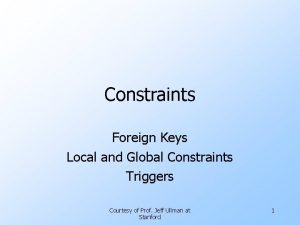Legal and Security Constraints Shanti Rowlison Legal and















- Slides: 15

Legal and Security Constraints Shanti Rowlison Legal and Security Constraints

Why Use them? Access Control management Tool • It provides a mechanism to allow machine-machine automation based on the various access controls • Provides a means of capturing information for users and data managers Legal and Security Constraints

Constraint Information Classes

use. Limitation This element provides an opportunity for resource custodians to identify that there are specific limitations on the resource for a given use.

releasability This element should be used to provide information about the release of the resource (DLMs). In particular, it should provide users with information on: • 1. who the resource should not be released to, or • 2. the release statement, or • 3. if there is a restriction on dissemination. For example: For Official Use Only (FOUO)

Legal Constraints The metadata and resource constraints are used to describe restriction on the access and use of the resource being described by the metadata record. Examples: Copyright to protect Intellectual Property, Legal Privilege (Lawyers/Doctors), Legislative secrecy (Defence/Intel Community), personal privacy (Privacy Act)

access. Constraints This element should be used to provide information on the access limitations for the resource. For example, • the resource may have access restrictions applied such as licenses • Or require a login to access (e. g. WA SLIP)

use. Constraints This element should be used to provide information on the limitations of the use of the resource. In particular, it should inform users how the resource should not be used. For example, • the resource may have use restrictions applied such as patents, copyrights or trademarks. • Not suitable for measurements e. g. web mercator

other. Constraints This element provides an opportunity for resource custodians to identify that there are specific limitations on the resource not covered by access or use constraints.

Security Constraints The metadata and resource constraints are used to describe restriction on the security classification of the resource being described by the metadata record. For example, the resource may have a security classification constraint, such as protected or secret. Guidance: The sub-components of this element are presented in more detail

Classification This element provides the classification placed on the resource or metadata indicating its handling restrictions. Values for this element are selected from a code list.

Classification. System Identify which classification system is being used. By default this should be the Australian Government Information Security Manual (ISM) or NZ Policy https: //dpmc. govt. nz/ourbusiness-units/national-security-group/national-security-policy

handling. Description This element provides an opportunity for resource custodians to identify any special handling instructions for the resource. This element provides space to identify additional information handling restrictions on the resource or metadata. This information is commonly referred to as “Security caveats”. For more information, refer to “Information security management guidelines: Protectively marking and handling sensitive and security classified information” on the Attorney-General’s Department’s Protective Security Policy Framework website

Australia’s Recent Changes

questions ?
 Personal growth presentation
Personal growth presentation Shanti bansal
Shanti bansal Shanti raghavan
Shanti raghavan Srividya bansal
Srividya bansal Private securit
Private securit Legal, social, ethical and professional issues in computing
Legal, social, ethical and professional issues in computing Legal and ethical issues in computer security
Legal and ethical issues in computer security Legal and ethical issues in computer security
Legal and ethical issues in computer security Legal and ethical issues in information security
Legal and ethical issues in information security Wireless security in cryptography and network security
Wireless security in cryptography and network security E commerce security meaning
E commerce security meaning Marriages and families 8th edition
Marriages and families 8th edition Marriages and families changes choices and constraints
Marriages and families changes choices and constraints Explain osi security architecture
Explain osi security architecture Guide to network security
Guide to network security Visa international security model in information security
Visa international security model in information security


